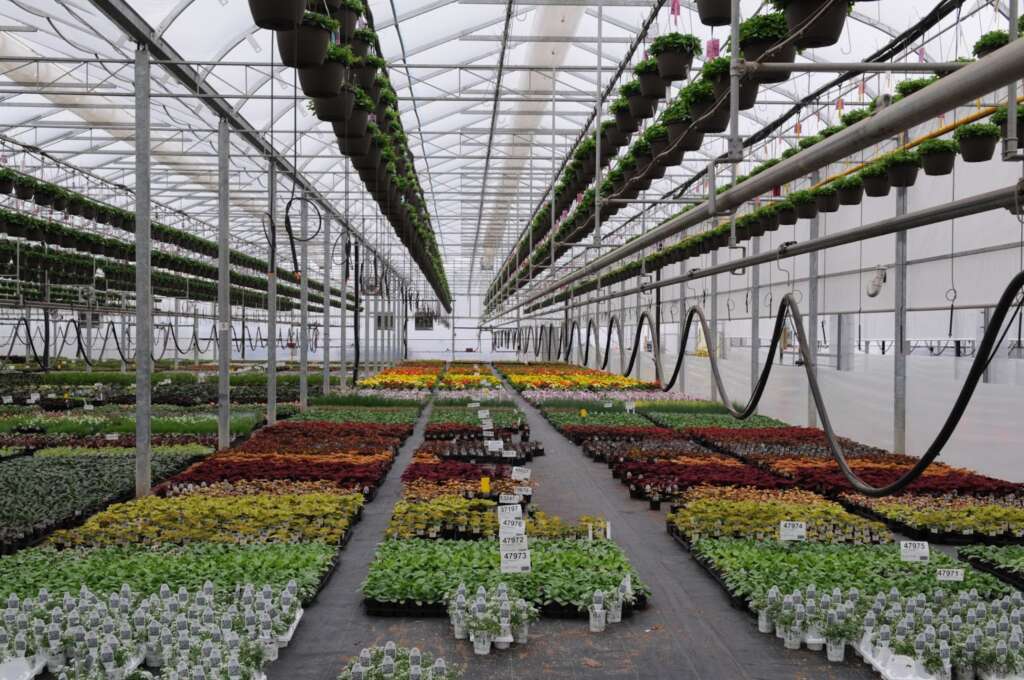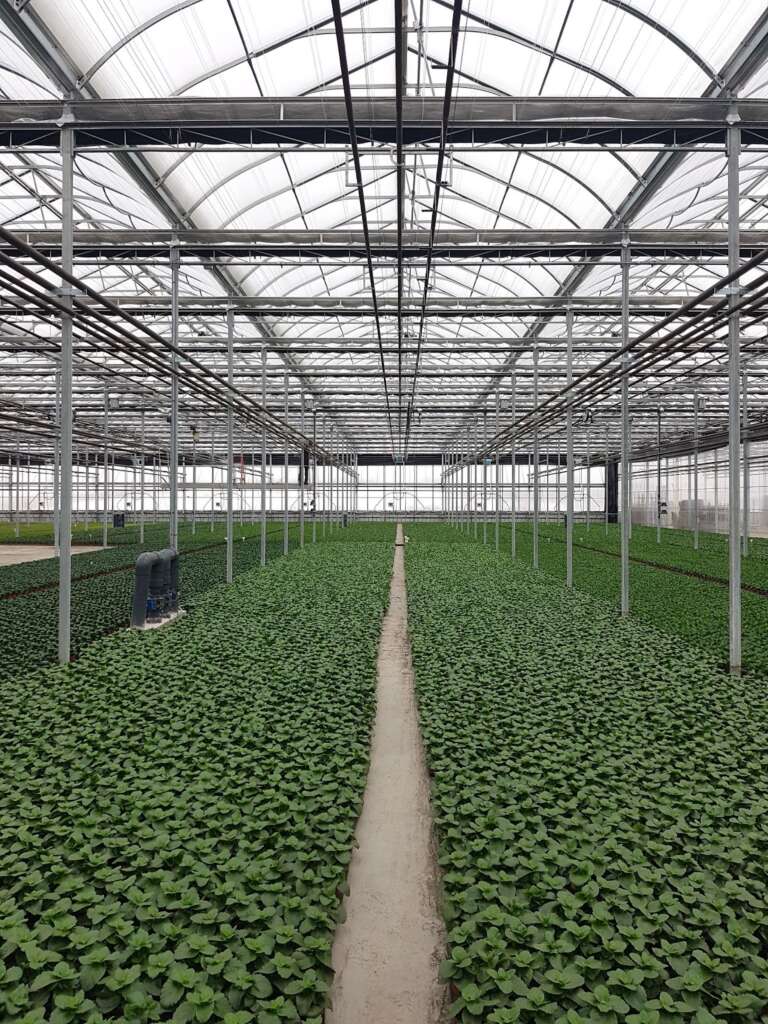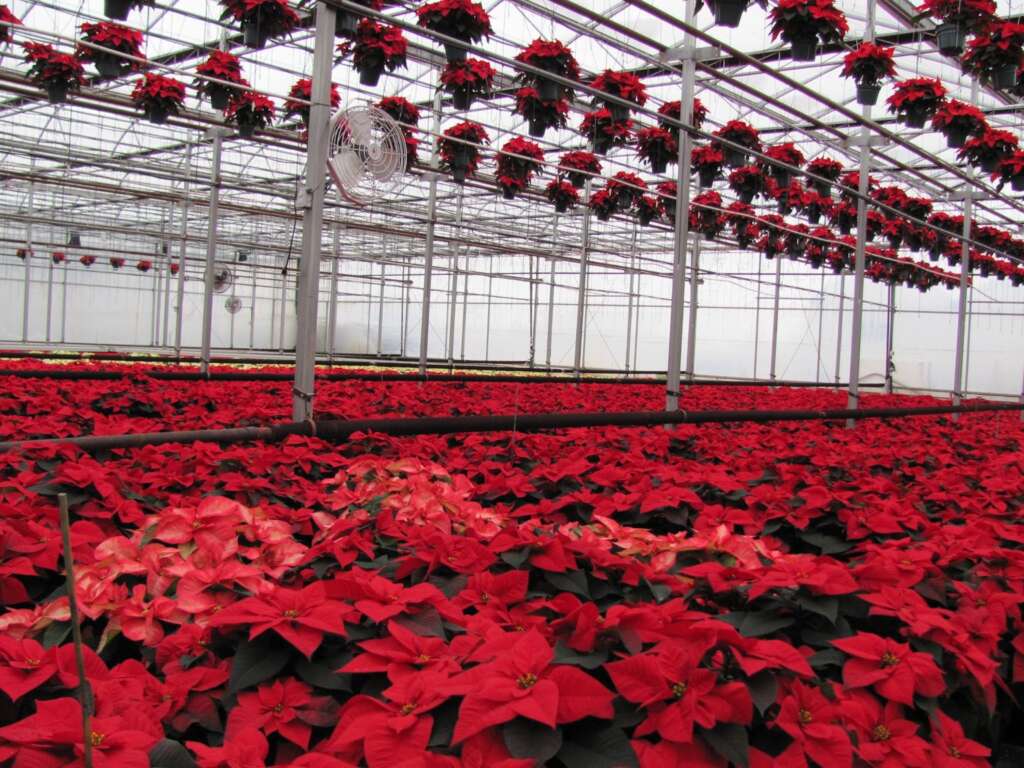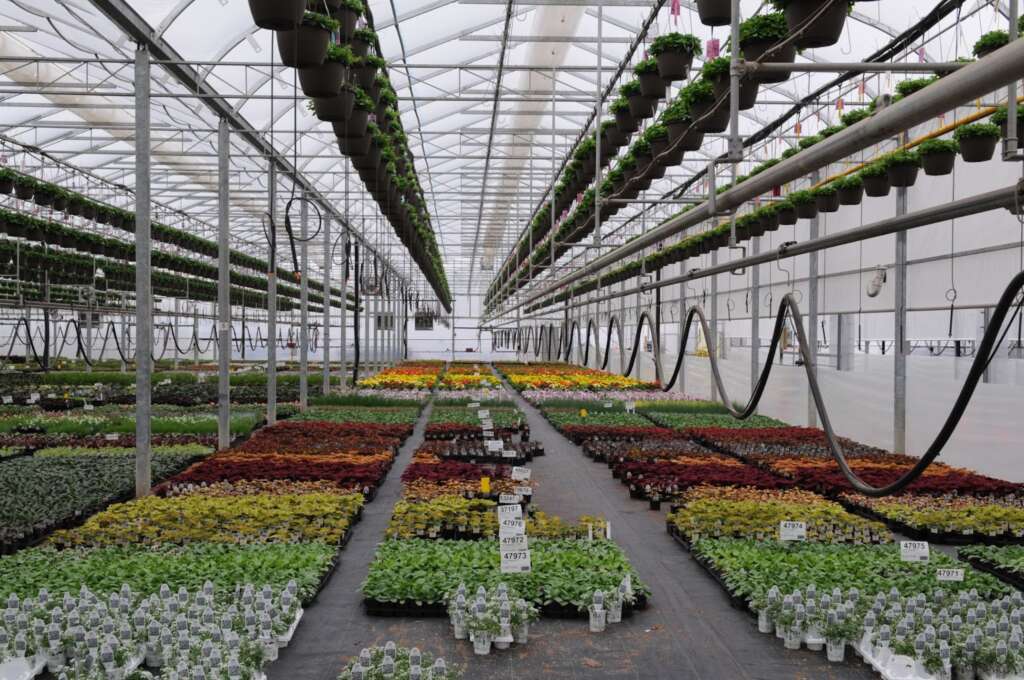Growing year-round greenhouse cropsis about more than just protection from frost; it’s about maximizing yield, consistency, and revenue every season. Whether you’re using advanced greenhouse systemsor a traditional hoop house, knowing what to plant and when can transform your growing operation into a year-round success.
Whether you’re operating a simple hoop house or a fully climate-controlled modern greenhouse, understanding what crops thrive and when is essential to maximizing the value of your structure and crop planning.
In this expert guide, we’ll walk through the best greenhouse cropsto grow year-round and how the type of greenhouse systemsyou operate can dramatically influence your planting decisions.
The Game-Changer: Controlled Environment Agriculture (CEA)
Before diving into season-specific crop recommendations, it’s important to understand the role of Controlled Environment Agriculture (CEA). CEA refers to highly controlled greenhouse systems equipped with technologies that regulateclimate, light, airflow, CO₂, and irrigation. These systems virtually eliminate traditional seasonality, enabling year-round production of nearly any crop.
With a CEA system, your greenhouse becomes a finely tuned production environment for crops to grow year-round. You can grow tomatoes in January, harvest fresh berries in early spring, or supply tropical plants throughout the year, all with consistent yields, quality, and profitable scheduling.
In contrast, traditional greenhouses or hoop houses, which often lack heating systems and environmental controls, are more seasonal and reliant on ambient outdoor temperatures. These structures still offer significant value but require careful crop planning based on climate fluctuations.
Spring: Kicking Off the Growing Season
Spring is a key time for most growers. As daylight increases and average temperatures begin to rise, commercial greenhouses ramp up operations.

In CEA Greenhouses
- Tomatoes: In Ontario and similar climates within the northern hemisphere, tomatoes typically start in the spring and are harvested throughout the summer. Thanks to CEA, growers can maintain a weekly harvest schedule with predictable yields and consistent quality, essential for meeting retail contracts and grocer expectations.
- Leafy Greens: Spinach, kale, arugula, and lettuces thrive in cooler temperatures and can be grown continuously, especially in greenhouses equipped with hydroponic or vertical systems.
- Floral: Spring marks the beginning of the flower season, especially for Mother’s Day and Easter sales. These holidays can bring significant revenue, provided the greenhouse environment supports timely growth.
In Non-CEA Structures
- Cool-Weather Crops: Leafy greens, radishes, peas, and cold-hardy herbs like parsley are ideal. These crops can tolerate fluctuating spring temperatures and shorter days.
- Overwintered Perennials: Early spring is when many growers sell trees, shrubs, and perennials that were overwintered in unheated structures.
Summer: Peak Production and Profitability
Summer naturally brings the best growing conditions, but it also comes with increased competition from outdoor growers. To stay ahead, greenhouse operations must differentiate through exceptional quality, strategic timing, or by focusing on specialty crops.
In CEA Greenhouses
- Tropical Plants: Garden centres can stock exotic and heat-loving tropicals, something traditional growers often can’t supply at scale.
- Berries and Fruit Trees: Thanks to the warmer environment, fruiting crops like strawberries, raspberries, and even cherries can be coaxed into early production. Controlled pollination (by introducing pollinators into the greenhouse) and protection from birds or pests give growers an edge in both yield and quality.
- Floral Products: Many retailers refresh their floral offerings in mid-summer with a second flush of hanging baskets, patio planters, or seasonal colours. A well-timed replanting schedule ensures availability.
In Non-CEA Structures
- Warm-Weather Vegetables: Cucumbers, peppers, eggplants, and tomatoes grow well if temperatures are high enough. However, be aware of temperature swings, which can still affect yield and quality.
- Replacement Plants: Retailers often look to replenish inventory mid-summer after early-season plant losses due to frost or poor weather. Greenhouses can capitalize on this with quick-turn floral or vegetable crops.


Fall: Transitioning with Strategy
Fall can be both an end and a beginning of plant growth, depending on how your greenhouse is managed.
In CEA Greenhouses
- Chrysanthemums: These traditional fall flowers are a retail staple. They’re photoperiod sensitive, and CEA growers can manipulate lighting to time blooms perfectly for the autumn season.
- Leafy Greens: Cooler temps outside reduce energy costs for internal cooling, making this a perfect time to transition to greens.
- Poinsettias: Though not harvested until December, poinsettias are planted in late summer. The fall season is all about nurturing them through early growth phases, ensuring quality and colour for peak holiday sales.
In Non-CEA Structures
- Cold-Hardy Crops: Leafy greens and root vegetables, such as carrots and beets, can still thrive as temperatures drop.
- Shrubs & Trees: If you’re not growing actively, fall is a good time to overwinter perennial stock, saving on future purchase costs and allowing for early spring sales.

The Bottom Line: Crop Planning is Everything
Regardless of the type of greenhouse systemsyou operate, strategic crop planning is essential when growing crops year-round. Here are a few best practices:
Maintain and Revisit Planting Schedules: Don’t treat your schedule as static. Evaluate performance after every season and adjust based on yield, demand, and timing.
Forecast Demand: Work closely with retail partners to understand what they need and when (from produce to ornamentals).
Optimize for Turnover: The more consistent your harvest and planting cycle, the more profitable and predictable your operation becomes.
Use Your Greenhouse’s Strengths: If you have a CEA setup, push the boundaries of what can be grown. If you’re working with a hoop house or a modern greenhouse, lean into seasonal crops that match your climate.
.
Winter: The Test of Greenhouse Design
Winter growing is where CEA greenhouses truly shine. The ability to control every environmental factor allows for production that would be impossible otherwise in the winter months.
In CEA Greenhouses
- Tomatoes, Lettuce, Herbs: Many commercial operations continue production of staple crops like vine crops and leafy greens year-round. Weekly harvest schedules continue uninterrupted, allowing for a dependable supply to retailers.
- Ornamentals: While more challenging in winter, the right infrastructure can support winter florals, such as cyclamen or early-stage poinsettias, as well as bulbs for spring sales.
In Non-CEA Structures
- Minimal Activity: Most non-heated greenhouses go dormant, although they can still be used to protect perennial stock or young trees through the colder months.
Floral Crops: Following Trends & Seasonality
The floral industry presents unique challenges. Unlike produce, floral crops are susceptible to trends, colour palettes, and consumer demand. What’s popular one year may fall flat the next.
- Holiday Timing: Key selling seasons include Mother’s Day, Easter, Thanksgiving, and Christmas. To meet these markets, planting must be precisely timed and coordinated with retail buyers to ensure optimal yields.
- Trend Sensitivity: In recent years, vibrant yellows and oranges have been popular not just in the fall but throughout the growing season. Staying current with industry forecasts is crucial, even if trends can be unpredictable.
- Seasonal Flushes: Retail garden centres often experience a drop in product availability mid-season. A second crop cycle timed for mid-to-late summer can refresh inventory and meet the renewed interest of consumers.
Final Thoughts
The modern greenhouseis a tool of precision agriculture. Whether you’re producing vegetables, fruits, flowers, or trees, your structure and how you manage it determine what you can grow, what time of year, and how profitably.
As greenhouse systemsand technology continue to evolve, growers who combine environmental control with strategic planning will lead the industry. And it all starts with knowing what crops to grow year-round and when.
Talk to a GGS expert to plan your ideal year-round growing system.

